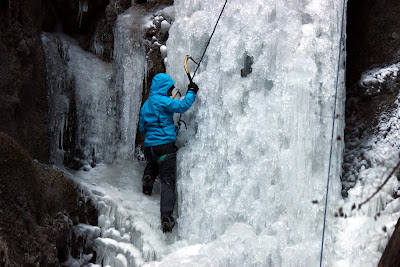A couple nights ago, I heard the rain falling outside my window, and I thought for sure that our white Christmas was doomed to melt. But then we awoke this morning to see the world glittering and white. All the trees, plants, and branches were covered with beautiful, needle-like ice crystals.
After opening presents this morning, we drove to Wellpinit and enjoyed Christmas dinner with my father's side of the family - the first time in many years.
Just before dinner, my uncle prayed for the food in the Spokane language, and then sang an old Christmas hymn in Salish:
qeqs npiyelsi šey' qeqs nkʷnem.
qeqs npiyelsi šey' qeqs nkʷnem.
k'ʷl'ncutn sqʷseʔs,
xʷl qʷn'qʷin't łuʔ sqelixʷ.
tl nwist cwamist.
cwełkʷp, xest yesu.
Roughly translated:
Let us be happy and let us sing.
Let us be happy and let us sing.
The Creator's son,
Because the people were pitiful,
Came down from up high.
Come down, good Jesus.
He talked about the elders from fifty years ago and before; how they believed in our traditional ways, but they also believed in the church way. With our communities divided, it is difficult to imagine people nowadays walking more than one spiritual path, and yet my uncle holds both realities in his spiritual life.
His compassion is an inspiration to me.
As we drove away, I reflected again and again on his prayer. I found myself filled with gratitude, and then to add perfection to inspiration, we witnessed one of the most spectacular sunsets in my life. It was like his prayer for happiness spilled into nature and filled the sky. It was a beautiful day, blessed with family, spirit, and love.
Following are some pictures of the day (click to see a larger version of each):
The early afternoon sun
shone beautifully over the
frozen landscape.
A farm road near Charles Road.
The plants were frosted white.
An abandoned house in the fog.
Even the trees were frosted white.
The sunset behind frozen tree branches.
The road below Coyote Spring.
Ice crystals everywhere...
The sun setting over
the Spokane River valley.
As I was taking pictures,
the sky erupted into a blaze
of golden light.
It was one of those moments
that took my breath away.
It almost made me want to cry.
The abandoned house,
now bathed in the
pink light of sunset.
The last golden band of light
at the end of a beautiful day.
















































